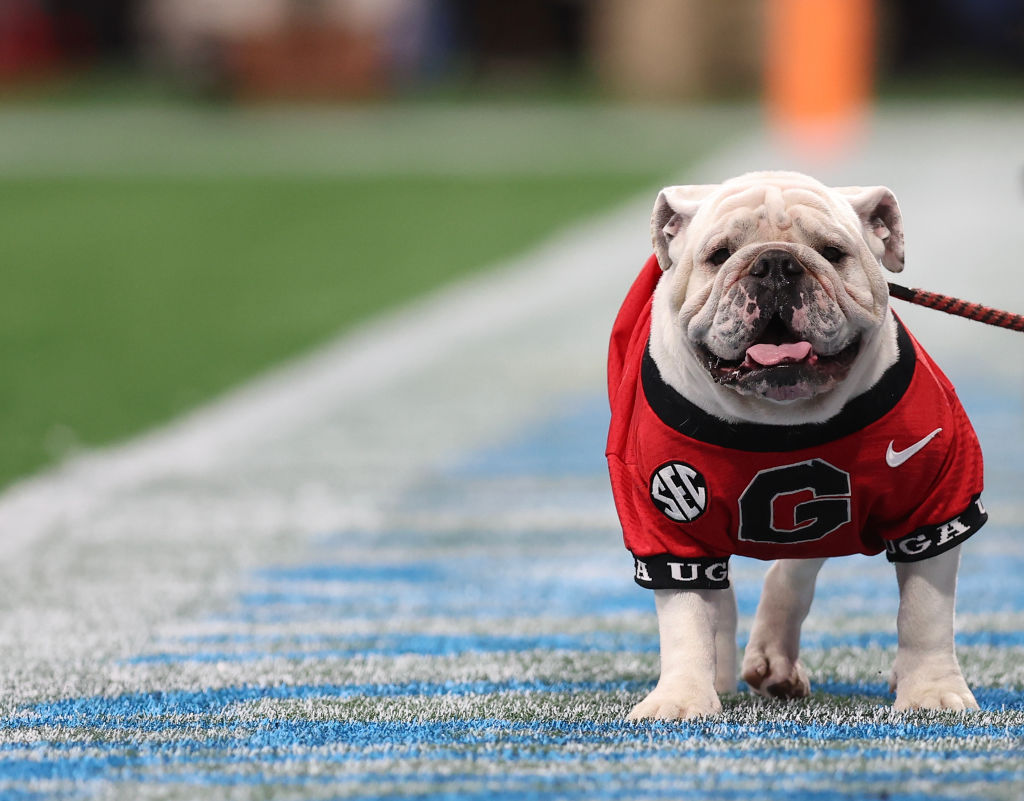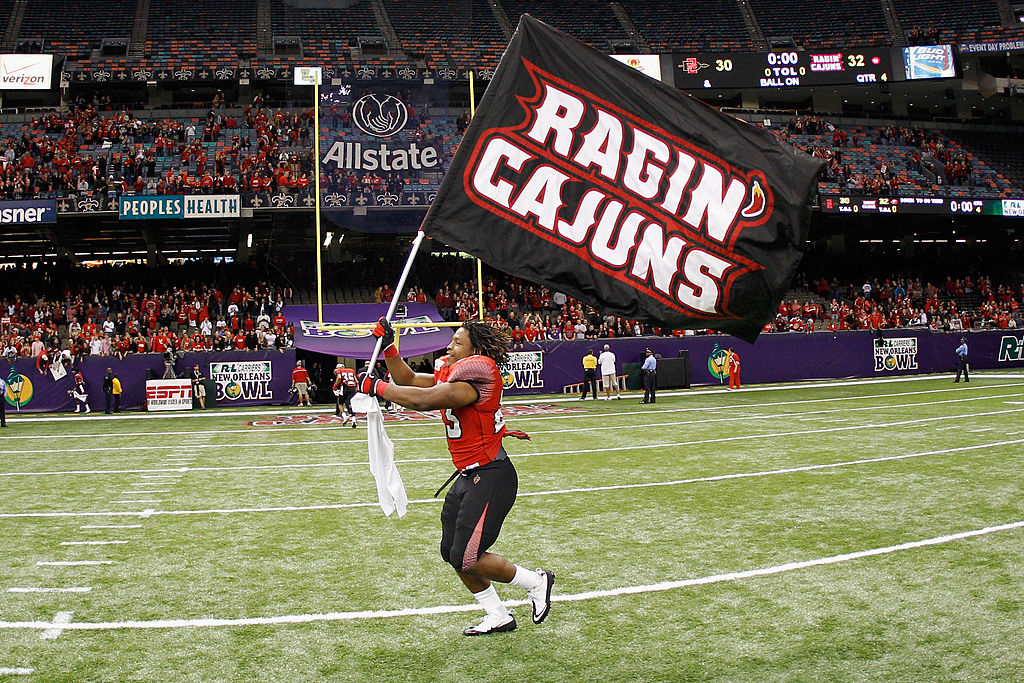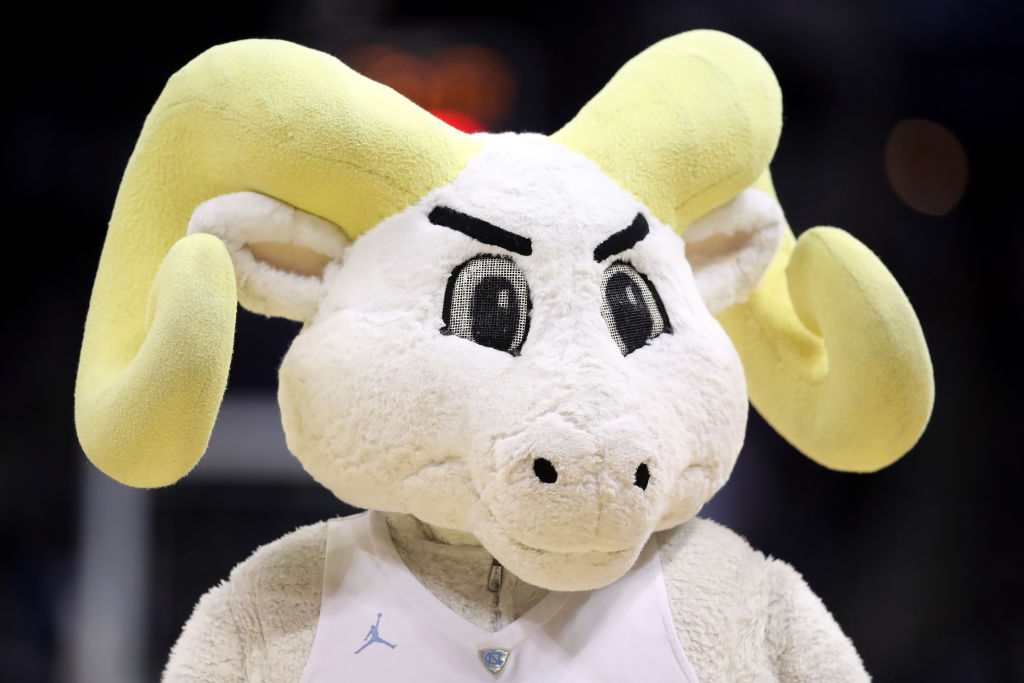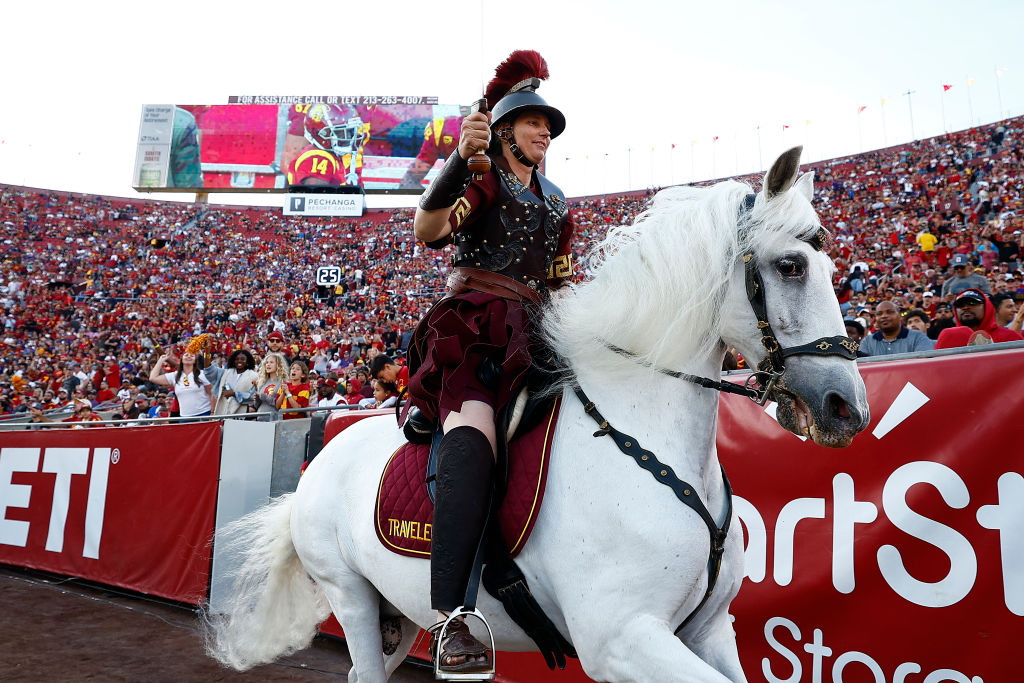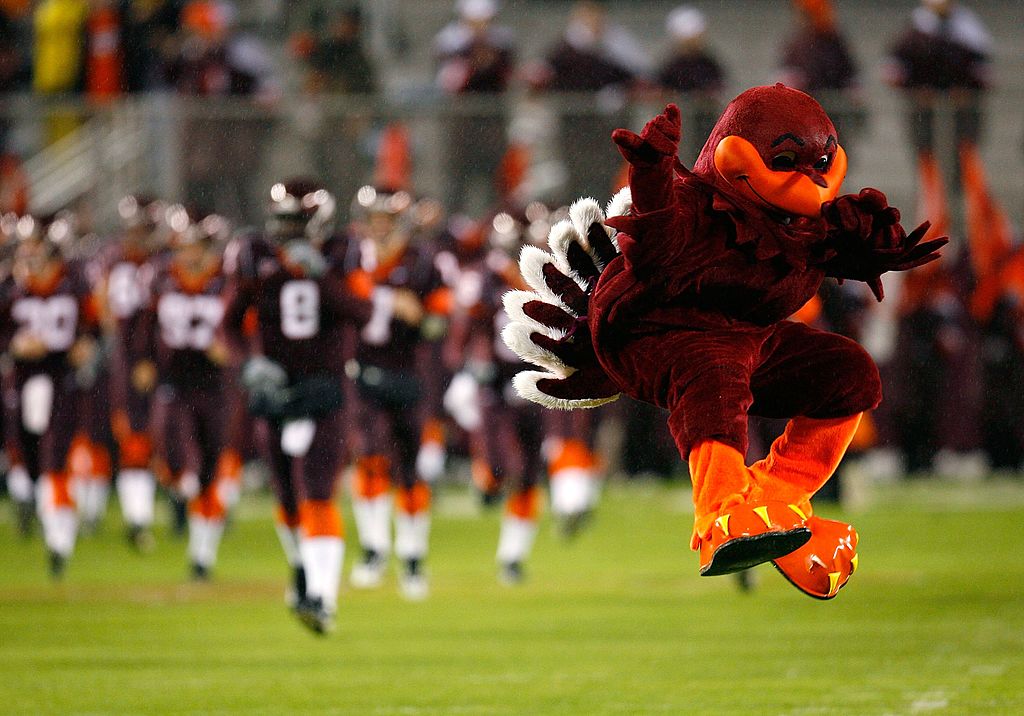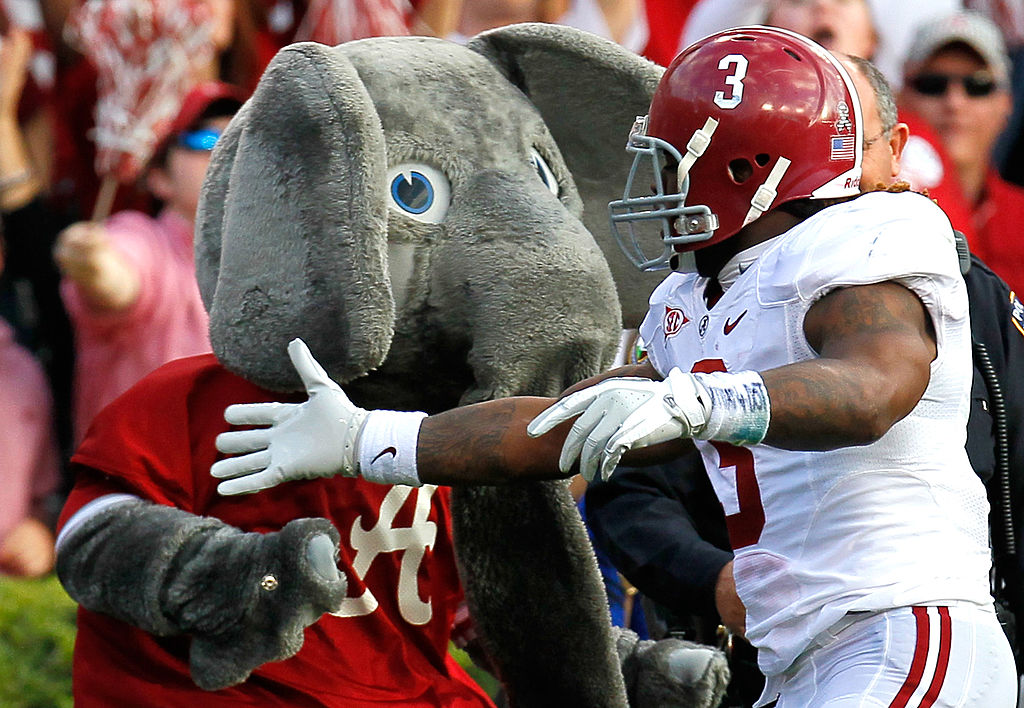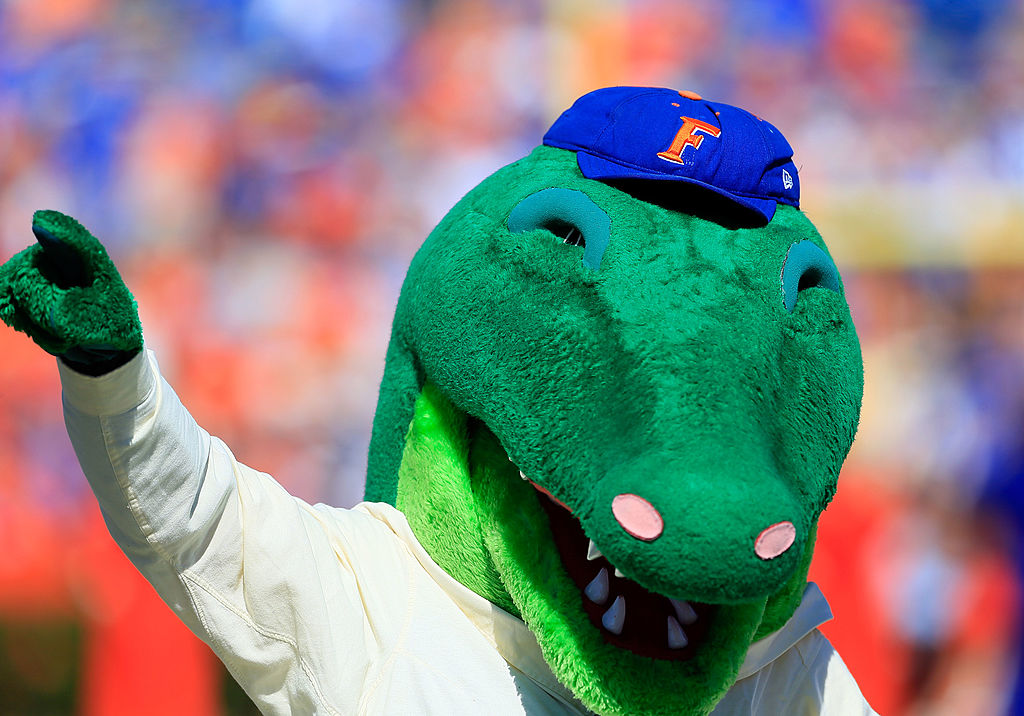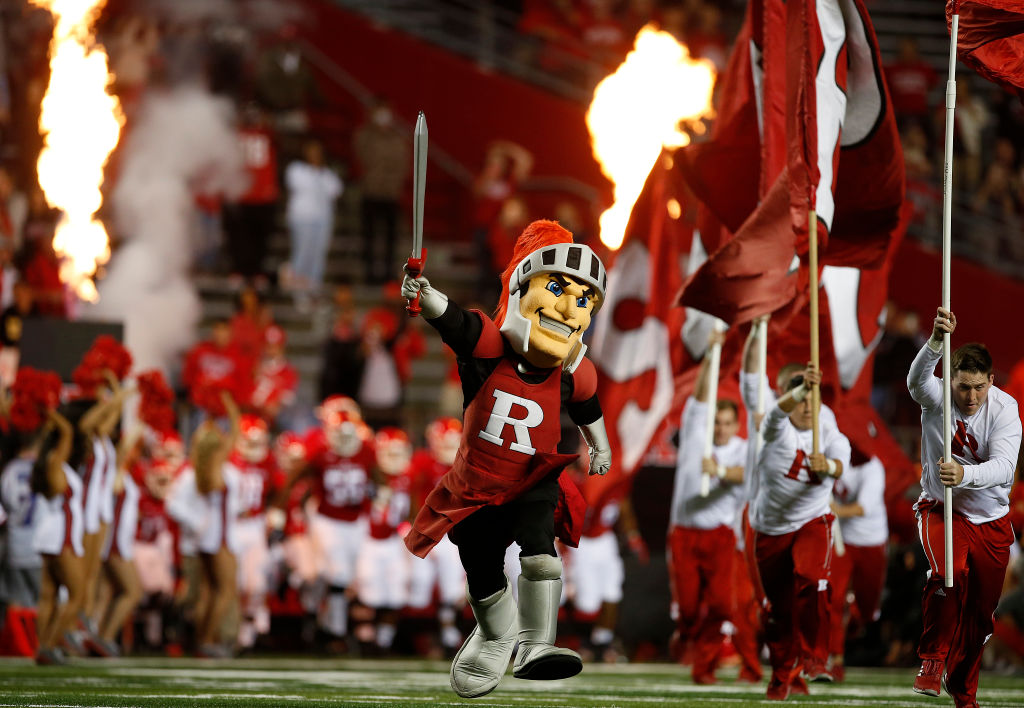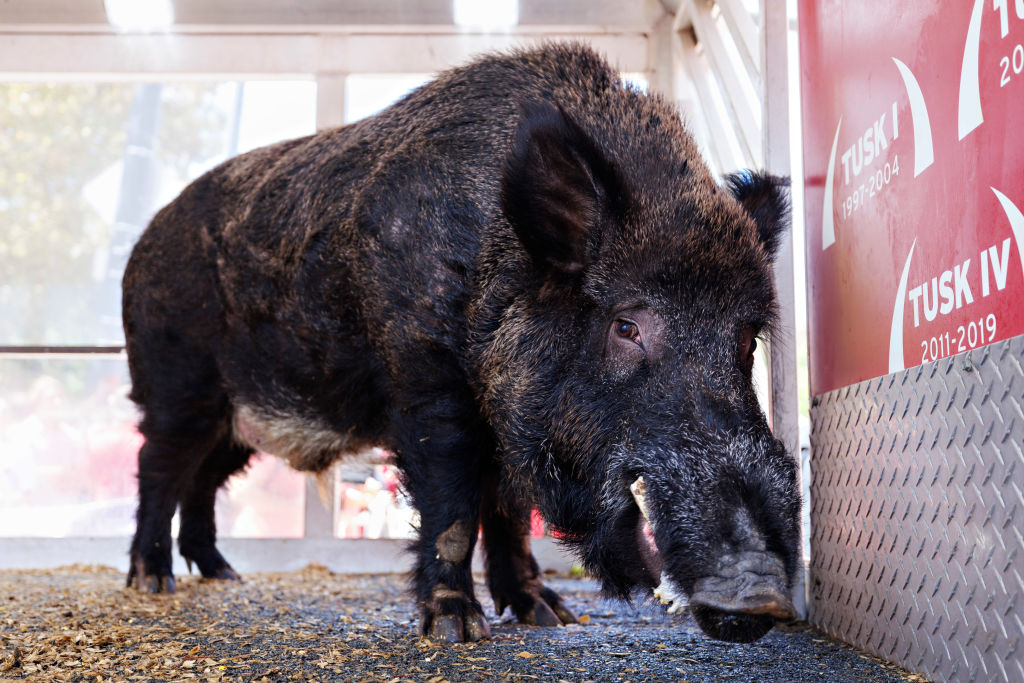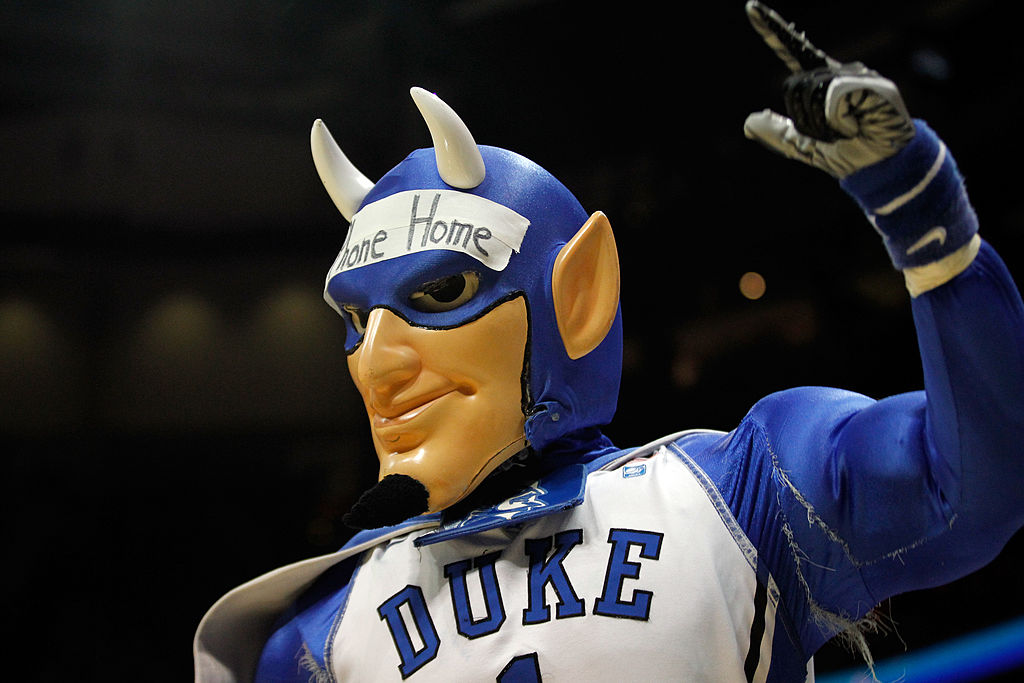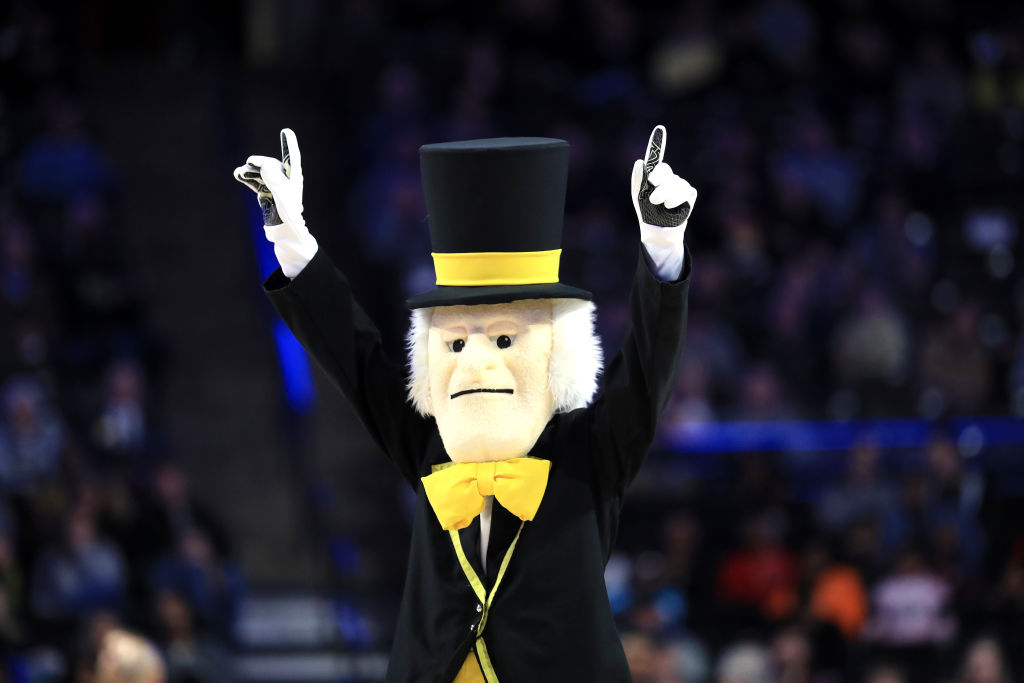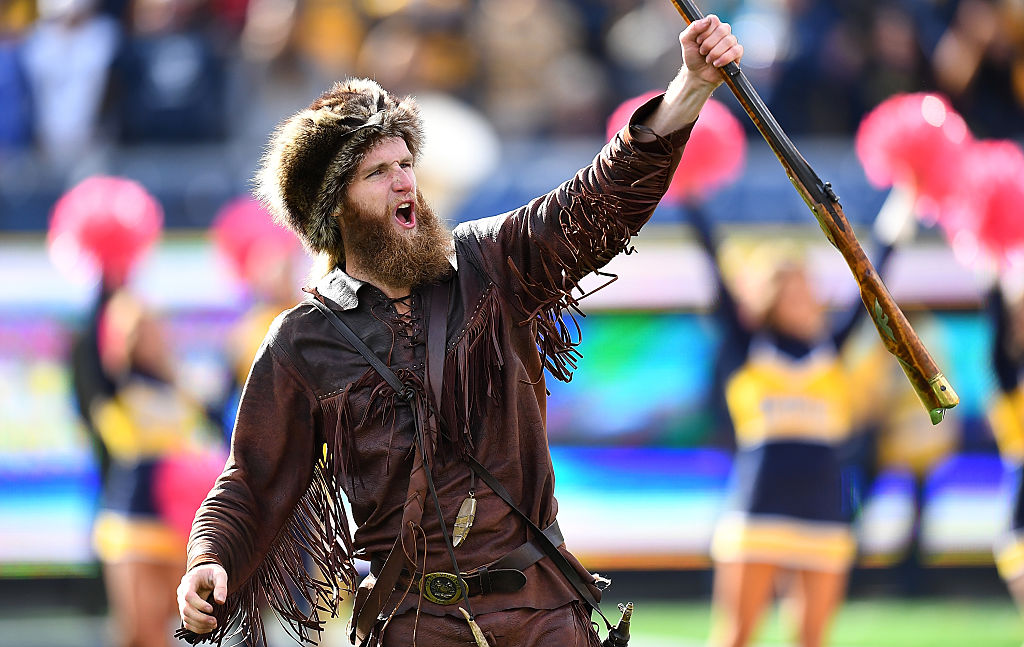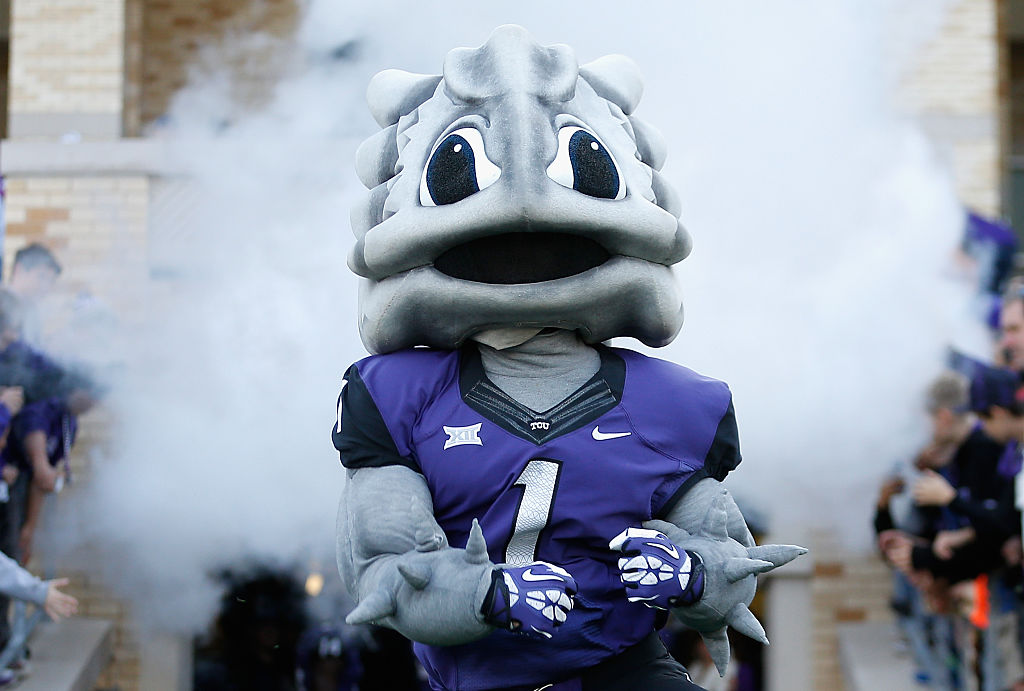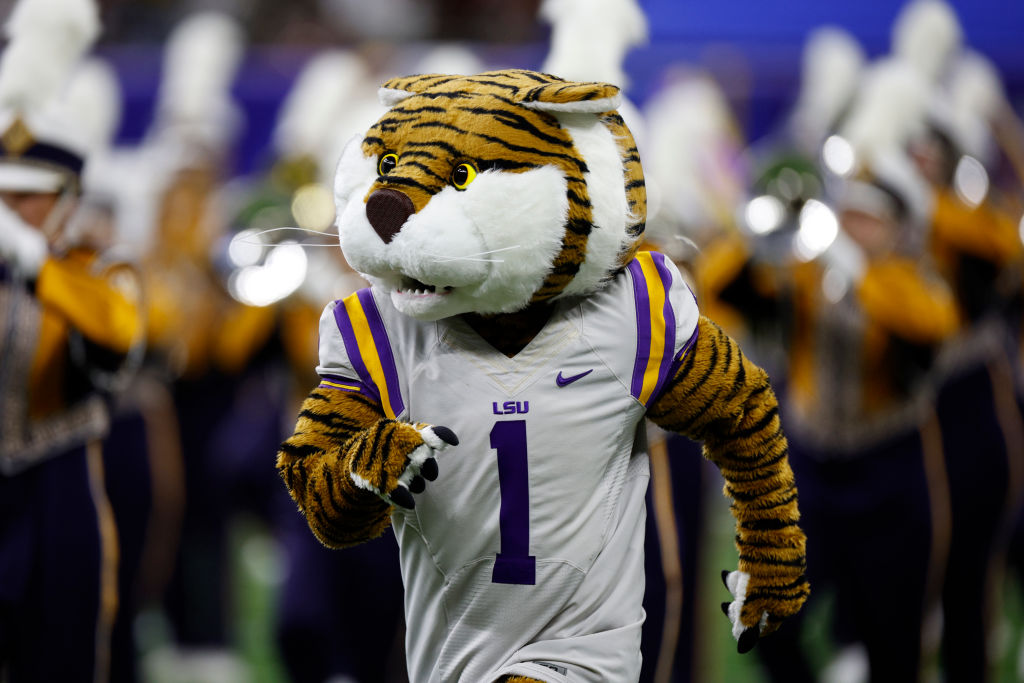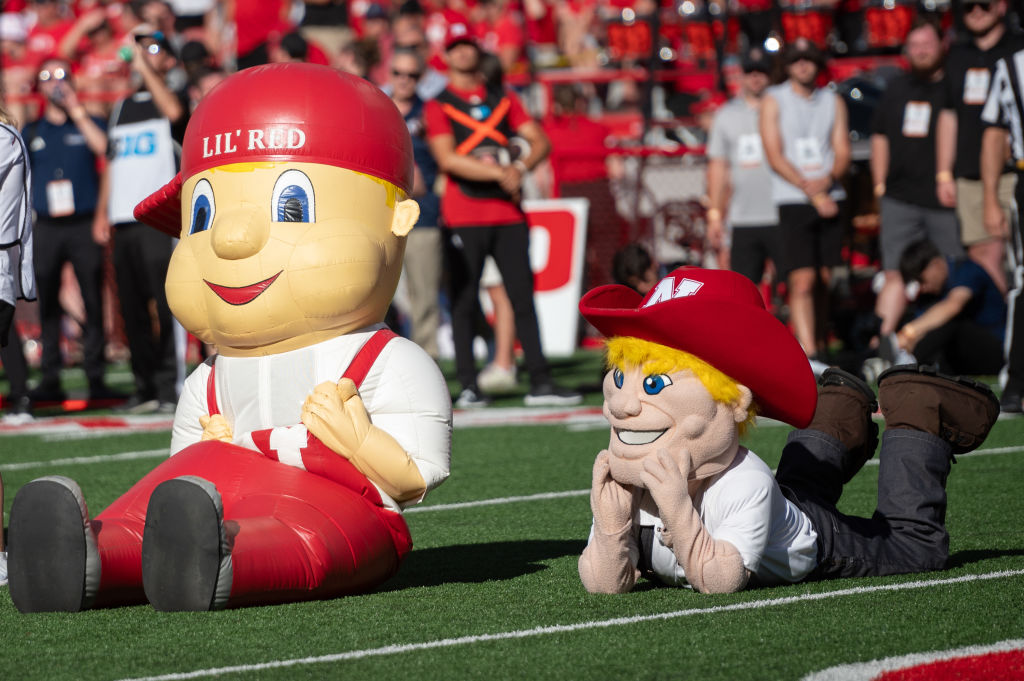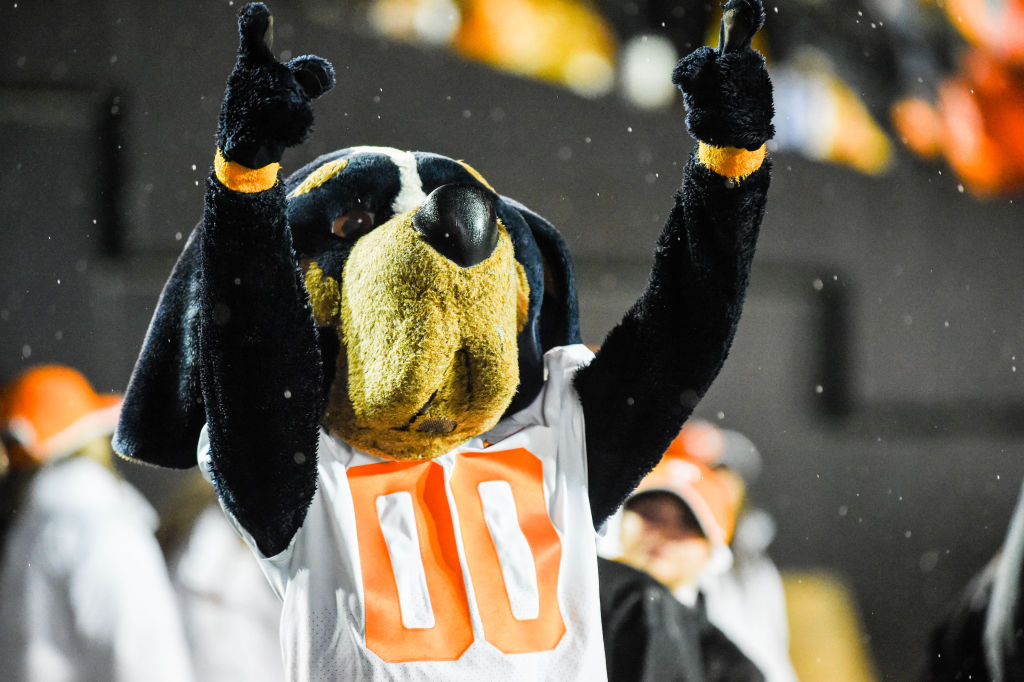Do you ever wonder where the quirky and lovable college football mascots originated? Well, for those who are interested in lore and legend, here are some of the most intriguing stories and rumors surrounding these iconic figures that represent our favorite schools.
The University of Georgia
Each generation of the English Bulldog mascot is from a purebred heritage dating back to 1956. These bulldogs all belong to the cleverly tokened Uga line that has been maintained by the Seiler family of Savannah, Georgia, but each pup also gets its own unique name for fans to remember and cherish. The dogs get the luxury of an air-conditioned dog house on the field, and they are honored with a varsity letter, a custom jersey, and a burial site within the stadium when their time comes to rise up to doggy heaven.
The United States Naval Academy
A goat has been the Navy’s mascot since 1893. Why you ask? According to ancient stories, a group of Navy officers were out at sea with a pet goat, who tragically died during their voyage. The crew loved the animal so much that they wanted to preserve its coat and memorialize it, but when the boat returned to land, two of the officers ended up diverting course with the goat’s skin and attending a Navy football game. At halftime, one of the officers wore the goat’s coat and ran along the sidelines to charge up the crowd. The Navy team would go on to win that game, and the legend of the goat was born.
The University of Louisiana-Lafayette
The flavor of the South is alive and well within this university! The University of Louisiana-Lafayette used to be represented by a bulldog too, but when head coach Russ Faulkinberry wanted to motivate his team in the early 1960s, he coined the name of the current mascot and it stuck. You can thank Faulkinberry for the fun rhyme and the spicy energy that endures to this day.
Stanford University
You may have seen the funky-looking tree on the sidelines of games, but that technically isn’t Stanford’s mascot because the school hasn’t officially declared one. The cardinal actually refers to one of the university’s main colors, and the tree is both a member of the school band and the symbol on the school seal.
The University of North Carolina
This school needed a spark after a rough year in the mid 1920s, and one of their cheerleaders thought an animal mascot would help re-inspire the team and match some of the school’s rivals. When it came to selecting an animal, a ram seemed like a solid choice because former UNC fullback Jack Merritt was known as the “Battering Ram.” All it took was $25 to buy a live ram to attend the games, and the mascot tradition for UNC was born.
UCLA
UCLA has a boy and a girl version of its famous mascot, which became official in 1926 after the school was represented by a stray dog named Rags in its early days. When UCLA made the jump to a bear, they originally wanted to use a grizzly, but that was already taken by another school so they settled on a bruin. The mighty brown bear has undergone several makeovers during UCLA’s history, with live versions being used between 1950 and 1960, but the ferocious energy has remained no matter what.
USC
In the spirit of the Greek myth, there is a combination of both horse and soldier in this school’s mascot. The animal half has always been a regal white color and is ridden by a person dressed in full armor on gamedays, inspiring the ranks of fans and players in Los Angeles Memorial Coliseum.
Tulane University
Tulane’s logo is a tsunami with a face, a concept connected to a football song printed in the school paper in 1920. However, the costumed mascot on gamedays is technically a pelican, which is perfect because these birds are often found near water.
Virginia Tech University
Virginia Tech’s mascot used to conjure up images of Thanksgiving, as it was known as a gobbler for many years. Now the mascot is still a bird, but it’s called a HokieBird instead, with the humans inside the costume revealing their identity during commencement by wearing bird feet. According to the school, a hokie isn’t really a bird by itself but rather a reference to an avid Virginia Tech fan.
The University of Colorado-Boulder
A live buffalo leads Colorado’s football team onto the field before games. The tradition of running with the buffalo within the stadium began in 1966, but a live buffalo calf first made an appearance on the sidelines in 1934, thanks to a bunch of students rounding up $25 to purchase the baby buffalo. Nowadays, it takes a dedicated team of student-athletes to harness the spirit of the American West and lead the massive animal on gamedays.
The University of Miami
Symbolic of the university’s team name, the Ibis is used as the team’s mascot because this bird is the last to leave before a hurricane and the first to return after the storm. The bird is an icon for knowledge in Egypt and the Everglades, and it has been the unofficial representative of the University of Miami since 1926. Officially, it became the mascot in 1959.
The University of Alabama
The elephant mascot originated from a 1930 sportswriter’s description of the Alabama football team, which was tough, aggressive, and powerful, not unlike a herd of elephants. The comparison stuck, although it was until 1979 when the school officially introduced the elephant costume wearing crimson clothing.
The University of Florida
The University of Florida’s Gator mascot originated in 1908 when a local merchant started selling school merchandise featuring a gator, which he and his son thought perfectly symbolized the state. The alligator quickly caught on and became the university’s official mascot in 1911. Live alligators were even used in the 1950s and 1960s before the school opted in 1970 for a more docile costumed variation.
Rutgers University
Rutgers adopted their medieval mascot in 1955, after previously using a rooster when the sports teams were called the Queensmen. The switch was spurred by a displeasure with the rooster resembling a chicken, so the school rebranded and chose a knight clad in the school’s colors to represent resilience and a fighting spirit.
The University of Arkansas
The Arkansas mascot originated in 1909 when a football coach likened his team’s tough play to a fierce and tenacious type of hog called a razorback. Fans embraced the term, and their university is now represented by “Tusk,” a live Russian boar, and several costumed mascots, some of which are specific for women’s sports and baseball.
Michigan State University
Michigan State’s nickname has been around since 1925, but their first mascot representing the Greek warrior was a giant, 60-pound papier-mache head built by some fraternity brothers at the school in 1955. In the late 1980s, the mascot got a makeover and became the muscular stud in full armor that you see on the field today.
Duke University
The Duke mascot has a unique origin, rooted in French military history. During World War I, the French military had a famous division called “Les Diables Bleus,” known for their bravery and blue uniforms. When a contest was held to select a school mascot, some participants suggested the English translation of these courageous soldiers. Though it was initially controversial for a religious school to adopt the term “devil,” it was ultimately embraced, and today, the Blue Devil stands as a symbol of pride and tradition for Duke’s athletics.
Purdue University
The origins of this school’s nickname date back to the late 1800s, when football teams were simply referred to as the “eleven.” A local newspaper of an opposing team didn’t take kindly to the Purdue team coming in and dominating their opponents, referring to them as “burly boiler makers.” It was seemingly an attempt to look down upon the working class and the type of education students received at Purdue, but the school and its members rallied together and embraced their heritage instead. In 1956, the mascot himself was first seen on the sidelines, and the nickname remains to this day.
Wake Forest University
Similar to Purdue, a newspaper influenced Wake Forest’s mascot when a student editor referred to the team as demon deacons because of their “devilish” performance against rival Duke, which also sported a demonic mascot at the time. The mascot itself was born from a dare in 1941 from one fraternity brother to another, and luckily the fans loved the student’s rendition of a deacon so much that the costume was adopted soon afterward.
West Virginia University
This school’s mascot is unique simply because there is no animated costume with a big head involved. It’s a real person in buckskins and an animal cap, embodying the rugged, pioneering spirit of West Virginia. Officially, the tradition started in 1934, and the first woman to serve as West Virginia’s mascot was chosen in 1990.
Texas Christian University (TCU)
According to historical accounts, the school was looking for an official name for its annual publication in the late 1800s, and their decision was allegedly made because the football field was covered in horned lizards. These creatures can shoot blood from their eyes and puff up their bodies to scare predators, which sounds like a perfect way to motivate a defense looking to wreak havoc on opponents.
Louisiana State University (LSU)
Courageous and fierce Civil War soldiers known as the Tiger Rifles inspired the LSU mascot, who now lives like royalty in an elaborate enclosure next to the football stadium. The multi-million-dollar project has a comfort rock, water features, and plenty of trees to make the beloved animal as happy as possible.
University of Nebraska
In an effort to differentiate itself from the normal color-and-name combo, Nebraska decided to represent itself with an ear of corn in the 1950s. That version looked strange and didn’t capture the image of a real Nebraskan. Thus, the mascot evolved into a human husker who has changed names a few times over the years but remains a stalwart member of the college football mascot ranks. Nebraska even has a youth rendition of the mascot who is supposed to resemble an eight-year-old boy in an effort to identify with younger fans of the team.
University of Tennessee
Several versions of the beloved hound mascot have presided over the school, but the original was chosen during a halftime contest and barked at hearing his name over the stadium loudspeaker. Now the school has the main mascot, a puppy version, and man resembling the Tennessee native Davy Crockett.
Penn State University
The now-extinct mascot of Penn State originated from the mouth of the third baseman on the school’s 1904 baseball team. Allegedly, a rival Princeton player taunted the Penn State team on a trip to play a road game, saying that the Princeton mascot was the most formidable animal ever. Penn State’s player responded by claiming Mount Nittany was home to a lion that was undefeated in every fair fight. That player eventually made a final push during his senior year by writing a piece about the lion in the school’s humor magazine. The name prevailed and the only thing that has changed since is the image that depicts the powerful beast and the costume featured on gamedays.
College football is just as much renowned for its thrilling games as it is for the rich history of the schools that play each week. The historic and often quirky mascots that grace the sidelines will forever embody the traditions, values, and spirit of their respective institutions, bringing fans together and enhancing the game-day experience.
